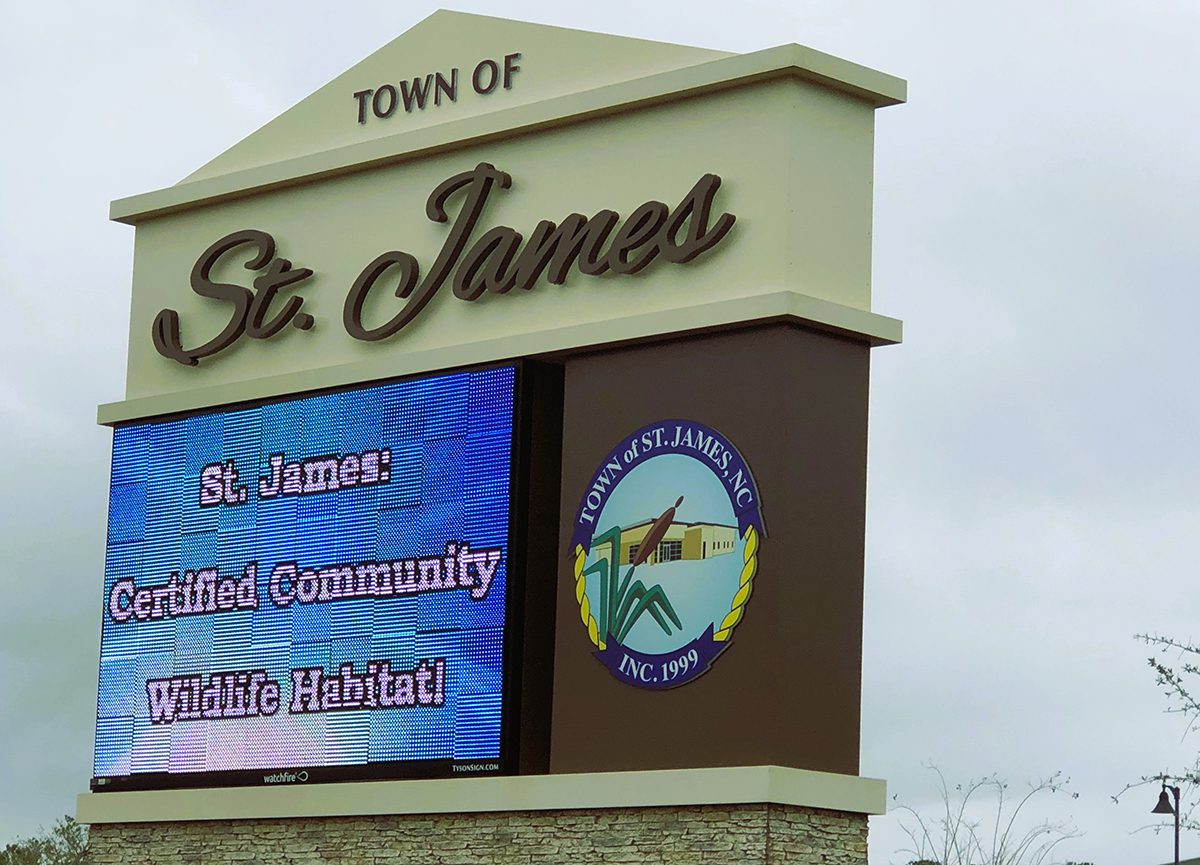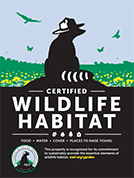
This story has been updated.
Any time Barry Fulton spots a species of bird in his yard he has not seen before, he can’t help but ask himself the same question.
Supporter Spotlight
Did I do that?
“You see new species coming and you just ponder, was that because I have more water sources or more plants that have berries for a food source?” Fulton said. “Next thing you know, you’re downloading apps to identify birds.”
Fulton and his wife, Debi Gallo, are among dozens of St. James residents who have in the past several months become part of a unique, yet growing club of property owners who’ve worked to get their town certified as a Community Wildlife Habitat by the National Wildlife Foundation.

St. James officially earned the designation in late February, making it the only coastal town certified in the state. Wilmington is registered but not yet certified — that could happen next year.
To date, nearly 20 towns, cities, communities and neighborhoods in North Carolina have achieved the designation, one that denotes areas where residents have put in the time to create and enhance wildlife habitat on their land.
Supporter Spotlight
Proponents of the program say earning the designation is not particularly difficult or expensive.
“In someone’s typical yard they’ve already done some landscaping, so a lot of people are well on their way in what would be needed to certify their property,” said St. James resident Ernie McLaney.
McLaney, member at-large on the St. James Conservancy’s executive board, moved from Charlotte to the coast a couple of years ago to settle in a life of quasi-retirement with his wife, bringing with him a wealth of knowledge about the National Wildlife Federation’s Wildlife Habitat Certification program.
He was one of the originators in supporting Matthews earn its certification in 2012. Three years later, Charlotte picked up the designation, making it, at the time, the largest certified city east of the Mississippi.
McLaney said he was immediately struck by what the town of about 7,000 residents had to offer as a wildlife habitat community.
“When I saw the beauty and amount of tree canopy that St. James has designed into this development here I was just really blown away,” he said.
Roughly 42% of land within the town, which incorporated in the mid-1990s, has been set aside as natural preserve. Natural buffers cushion areas along N.C. Highways 211 and 906, main county thoroughfares that intersect at the town’s northwest corner.
“With all of that in mind and seeing that people were incorporating native plants, bird feeders and birdhouses in their landscape, I thought that this would be an easy project to take on,” McLaney said.
He reached out to the conservancy with the idea, eventually landing him on the nonprofit’s board. Soon he would discover that around 45 properties in St. James were already certified. The requirement to become certified was 150 individual wildlife habitats from everyone including homeowners and churches to fire stations and schools.
The conservancy, with help from organizations including The Garden Club at St. James, hosted a number of community environmental education and outreach programs to spread the word.
“It took us less than a year to get St. James certified,” McLaney said. “Record time. We were impressed.”
Today, around 165 properties in the town are certified.
Certification can be as simple as placing a bird bath or other water feature, birdhouses or nesting boxes and feeders, or planting berry-bearing shrubs in your yard.
“It’s something you can do at your own pace as your time and finances allow,” McLaney said.
That’s a message he hopes resonates throughout other communities in coastal North Carolina.
“It’s an easy lift for some and it’s a recognized process that if people see habitat destruction in their community from growing developments they can counter some of that loss by enhancing what they have in their yard,” McLaney said.
Fulton agreed.
“It’s important that we maintain habitat for our wildlife,” he said. “There’s so much of the habitat that is getting clear cut for development. Everybody can do their fair share to provide some more shelter. They’re getting chased from their natural environments in every way. It’s important to do what we can now.”








